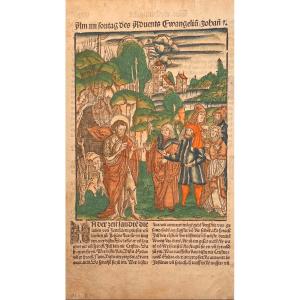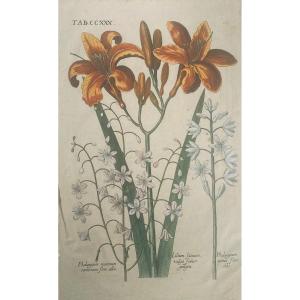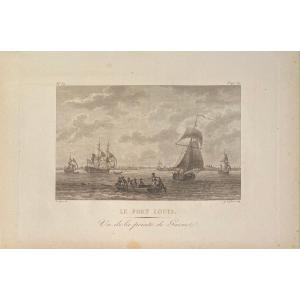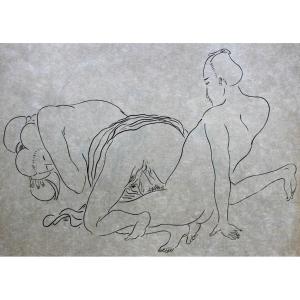No. 15 From the series: Tsuki No hyakushi (The Hundred Aspects of the Moon
1889
Seal: Yoshitoshi No In
Engraver: Enkatsu
January 1886
Oban
Nishiki-e
Beautiful impression with embossing, notably in the hair, beautiful colors, very light dusting in the outer borders
"The winged ghost that appears here is that of Sasaki no Kiyotaka, a high dignitary of the court of Emperor Go-Daigo in Kyoto. Dissatisfied with the purely nominal power granted to the emperors, the ambitious Go-Daigo wanted to exercise effective authority. In 1333, he overthrew the Hojo shogunate established in Kamakura, and arrogated to himself political control of the country. Three years later, he found himself up against the ambitions of the Ashikaga clan. His advisors, aware of their military inferiority, agreed to retreat to give themselves time to raise troops. Among them was Kiyotaka's great rival: Kusunoki no Masashige. Kiyotaka, seeing that the emperor balked at such a renunciation, saw this as an opportunity to outwit Masashige. Defying common sense, he declared that instead they had to fight. The emperor was easily convinced and suffered a crushing defeat at the Battle of Minatogawa. The Ashikaga, now masters of the country, established themselves in Kyoto, and Go-Daigo fled to Yoshino, south of Nara, where he established a court competing with the new shogunate. As a reward for his ill-advised advice, Kiyotaka was forced to commit suicide. From then on, his spirit, refusing to take leave of the living, returned every night to hover above the palace, overwhelming and terrorizing the court in exile. Seeing that no one dared to confront him, a valiant lady of the court named Iga no Tsubone resolved to go to meet him, armed with a lantern full of fireflies. She managed to appease him, and he never appeared again. Iga no Tsubone was the wife of Kusunoki no Masashige's son, who was also driven to suicide after losing the battle he had fought against his will. From the Meiji era onwards, the story of the loyal Masashige was remembered by the Japanese as a model of patriotism. As for his daughter-in-law, she proved her worth a second time when Go-Daigo suffered a new attack from the Ashikaga troops, by felling a tree to allow the empress to cross the ravine that separated her from the emperor. We see her here fearlessly facing the ghost of Kiyotaka. Her long hair falls to the ground in accordance with the fashion of the time. Engraving the hair was a delicate exercise, as the thin wooden blades left protruding from the matrix to produce the lines wore down very quickly. The ghost's lips bear the blue color that ukiyo-e conventionally gave to corpses, and its eyes have a golden yellow glow. His clawed fingers cling to the title cartouche: Yoshitoshi, like other master printmakers, enjoyed playing with frames and borders. As for the moon, it shines through a diaphanous cloud, unless it is an eclipse - which would fit well with the fantastic theme of the print."
In: ONE HUNDRED ASPECTS OF THE MOON, John STEVENSON, 2018, Editions Citadelles and MAZENOD
The sequel to "One Hundred Aspects of the Moon", inspired by historical or legendary stories from China and Japan, is Yoshitoshi's most famous series, begun in 1885 and completed just before his death in 1892. Even then, each new print published was an event, with prints often selling out the morning of their publication.
Image width: 224.00
Image height: 330.00
Sheet Width: 250.00
Sheet Height: 373.00




























 Le Magazine de PROANTIC
Le Magazine de PROANTIC TRÉSORS Magazine
TRÉSORS Magazine Rivista Artiquariato
Rivista Artiquariato